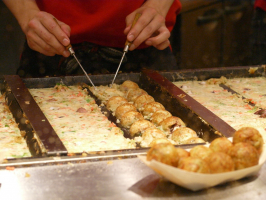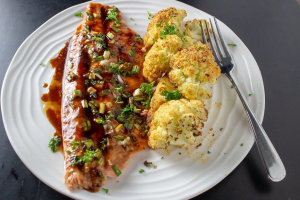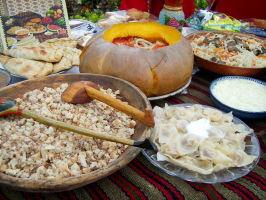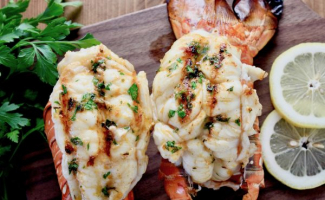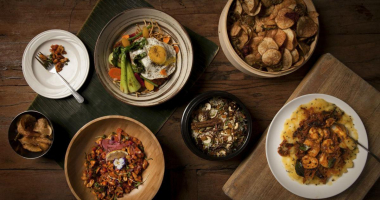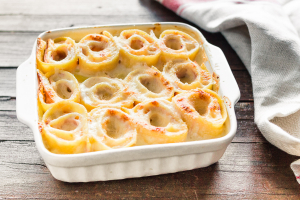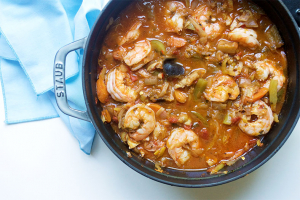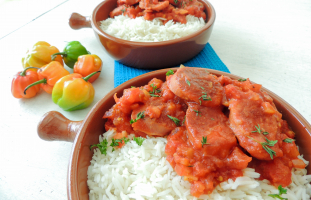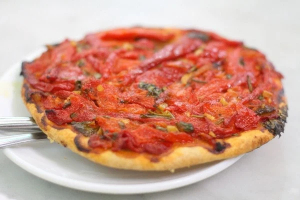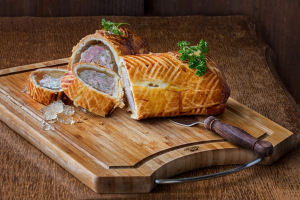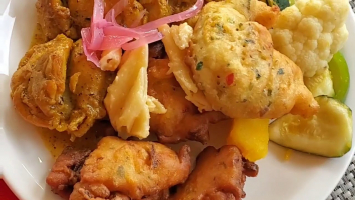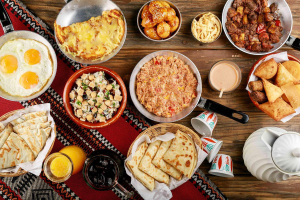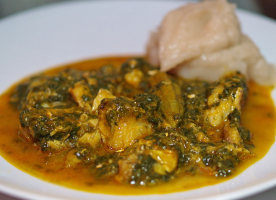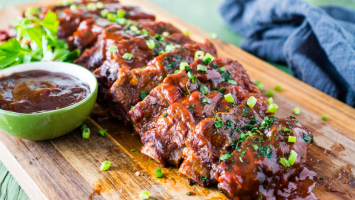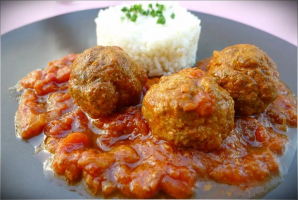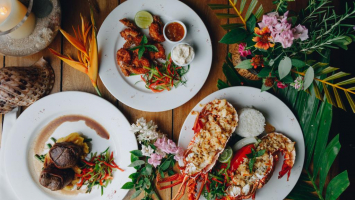Top 15 Best Foods in Goa
Goa is renowned for its stunning beaches, vibrant culture, and, of course, its delectable cuisine. Goan food is special because it's a blend of Portuguese and ... read more...Indian ways of cooking. In this article, Toplist will talk about some of the best foods in Goa that you should try.
-
The first item on the list of the Top 15 Best Foods in Goa is fish curry rice, a beloved Goan dish that is a symbol of coastal cuisine with a delightful blend of flavors. It is a delectable and hearty meal consisting of fresh fish cooked in a fragrant, mildly spicy curry, served alongside steamed rice.
The preparation begins with putting the fish in a mixture of turmeric and red chili powder, giving it a vibrant color and subtle heat. The curry base is crafted from a harmonious combination of coconut milk, tamarind, and spices. This use of ingredients imparts a rich and creamy texture with a perfect balance of sweet and tangy notes.
The dish is proof of the cultural exchange between its Indian and Portuguese influences. The final result is a tasty symphony of flavors. Fish curry rice holds the coastal spirit of Goa, offering a comforting meal that satisfies the taste while celebrating the region's unique culinary heritage.
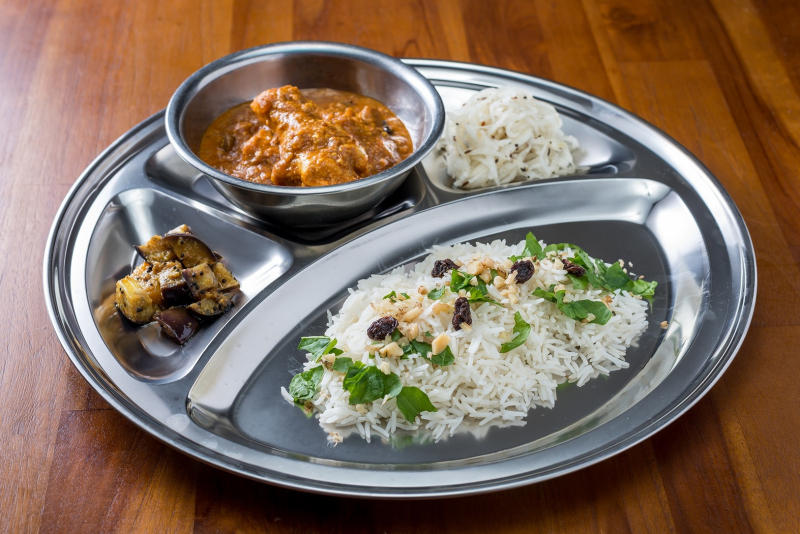
Image from https://pxhere.com/en/photo/813572 Video by Spice Eats -
Vindaloo is a tantalizing and aromatic dish that has etched its place in the heart of Goan cuisine. It's a delightful amalgamation of flavors, drawing influences from Indian and Portuguese cooking traditions with a fiery and tangy profile.
The process of crafting vindaloo begins with marinating the meat in a mixture of spices, including chili, cumin, mustard seeds, and garlic. This marinade imparts both heat and depth of flavor to the dish. The meat, having soaked up these spices, is then slow-cooked in a flavorful sauce. The key ingredients for the sauce are vinegar and tamarind, which give Vindaloo its distinct tartness.
The result is a mouthwatering dish with a rich, dark gravy that clings to the tender, succulent pieces of meat. The infusion of spices, combined with the tangy kick from the vinegar, creates a complex and unforgettable taste experience. Vindaloo's spiciness can be adjusted to suit individual preferences, making it versatile for various palates.
Vindaloo is a testament to Goa's historical and cultural melting pot, where Indian and Portuguese influences have intertwined. This dish has transcended borders and is celebrated not only in Goa but across the globe. Its unique and vibrant flavor profile is a true representation of the culinary diversity found in the coastal paradise of Goa.
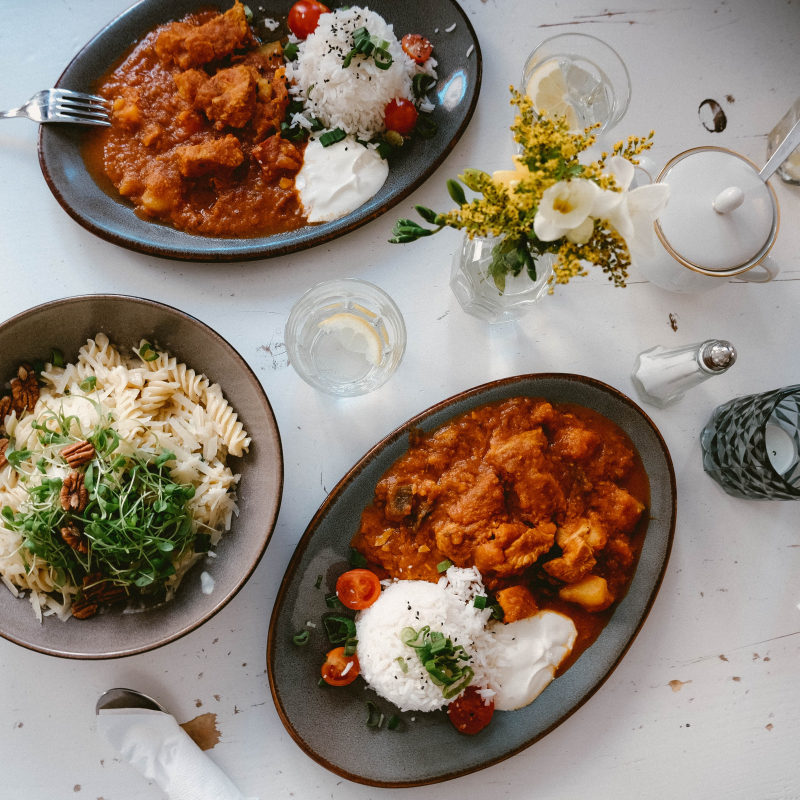
Image by Jackie Jabson on https://www.pexels.com/photo/close-up-shot-of-delicious-food-on-white-surface-5894767/ Video by Curries With Bumbi -
Xacuti, a flavorsome dish originating from the sunny shores of Goa, is a delightful blend of cultural influences, making it a true gem in the world of coastal cuisine. This aromatic dish is typically prepared with either chicken or lamb and is celebrated for its intricate and layered flavors.
The preparation of Xacuti begins with marinating the meat in a combination of aromatic spices such as cumin, cloves, and cinnamon, along with a hint of nutmeg. This marinade infuses the meat with a rich and exotic fragrance, setting the stage for a delectable meal.
The heart of Xacuti lies in its unique sauce, created from a harmonious mix of coconut, roasted poppy seeds, and a medley of additional spices. This combination results in a thick and creamy sauce that is bursting with complex flavors. The key to the dish's distinct taste is its intricate spice blend and the creamy consistency that makes every bite a delightful experience.
Xacuti truly reflects Goa's rich history and multicultural influences, with both Indian and Portuguese elements. The dish's unique blend of spices and ingredients makes it an exceptional culinary masterpiece. It showcases the diverse and vibrant flavors of Goa, making it a must-try for anyone seeking to explore the region's rich and diverse gastronomic offerings.
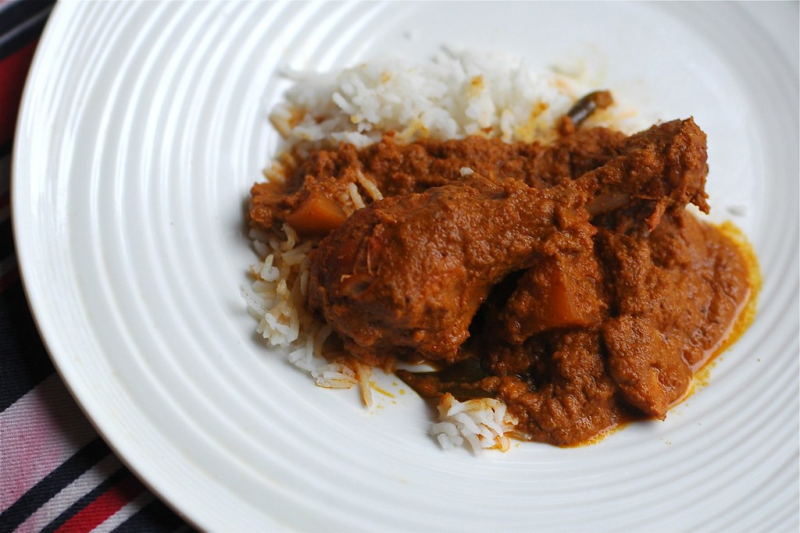
Image by Pankaj Kaushal on https://www.flickr.com/photos/pankaj/6199896373 Video by Cookd -
Sorpotel is a popular dish from Goa, India, known for its unique blend of spicy and tangy flavors. It's traditionally made with pork and is often prepared for special occasions and celebrations.
To make sorpotel, small pieces of pork are marinated in a mixture of spices, including red chilies, black peppercorns, and cloves. After marinating, the meat is slow-cooked in a flavorful and aromatic sauce. The sauce is made using a combination of ingredients like vinegar, garlic, ginger, and tamarind, which gives Sorpotel its distinctive tangy and spicy taste.
The result is a rich, dark, and slightly fiery dish with a medley of intense flavors. Sorpotel is a testament to Goa's multicultural culinary influences, with elements of both Indian and Portuguese cooking styles. This dish is cherished for its bold and complex taste, making it a favorite among those who enjoy a hearty and robust meal.
Sorpotel is often enjoyed with plain steamed rice or Goan bread, adding to its appeal as a flavorful and festive dish. It is a significant part of Goan culinary heritage and showcases the region's love for bold and spicy flavors.
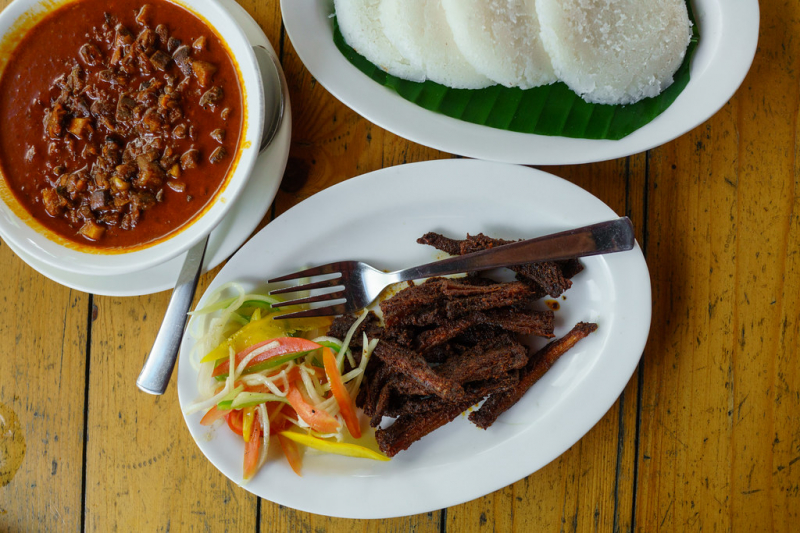
Image by Premshree Pillai on https://www.flickr.com/photos/premshree/28224496359 Video by Fatimas Cuisine -
Rava Fried Fish is a popular snack or side dish in Goa, appreciated for its simplicity and delightful taste. This dish typically features fresh pieces of fish, often kingfish or pomfret, coated in a crispy layer of semolina (rava) and then fried until golden and crunchy.
The preparation is straightforward but results in a tasty treat. First, the fish pieces are dipped in a mixture of spices like turmeric and red chili powder to add a hint of color and flavor. Next, they are rolled in the semolina, which forms a crunchy outer coating when fried.
The final result is fish that's crispy on the outside and tender on the inside, offering a wonderful contrast of textures. Rava Fried Fish embodies the coastal spirit of Goa, as it's made with fresh catches from the nearby sea. It's a popular street food and is often served with a squeeze of lemon and a side of spicy chutney for an extra burst of flavor. This dish is a testament to Goa's love for seafood and its ability to create simple yet delicious recipes. Whether you're enjoying it by the beach or at a local eatery, Rava Fried Fish is a must-try for seafood enthusiasts visiting Goa.
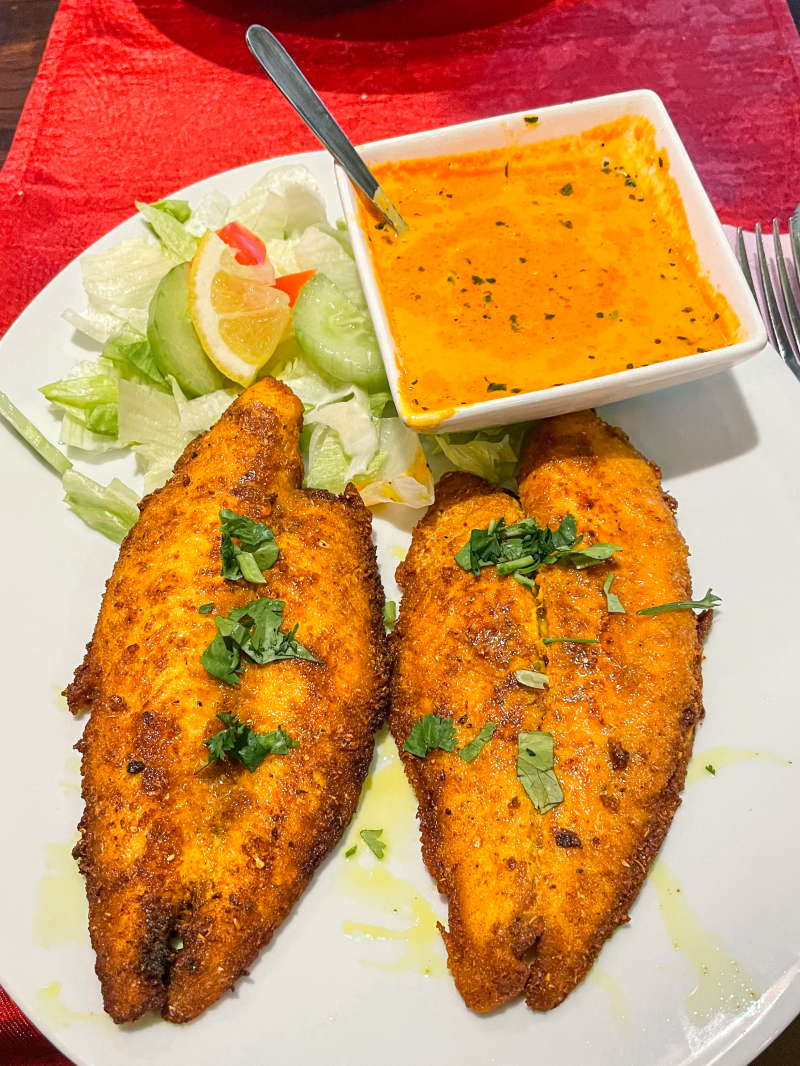
Image by Carolien Coenen on http://yab.be/tag/lunch/ Video by Get Curried -
Bebinca is a delectable and traditional Goan dessert that's as rich in history as it is in flavor. It's a sweet and indulgent pudding that stands out for its multi-layered structure and use of coconut. This dessert is a true testament to the culinary heritage of Goa.
The making of bebinca involves a mix of basic ingredients but demands a good deal of patience. It is prepared with coconut milk, sugar, ghee (clarified butter), and eggs. The key to Bebinca's uniqueness is its layering. Each layer is added one by one, and the dessert is baked to perfection.
The result is a dessert with a smooth and creamy texture, sweet and aromatic from the coconut and ghee. The layers have a slightly different consistency, which adds a lovely contrast to each bite. Bebinca is not only a treat for the taste buds but also a visual delight with its distinctive striped appearance.
It's a dessert deeply rooted in Goan culture and is often enjoyed during special occasions and celebrations. Bebinca is a must-try for anyone with a sweet tooth looking to experience the sweet, aromatic, and layered goodness of Goan desserts.
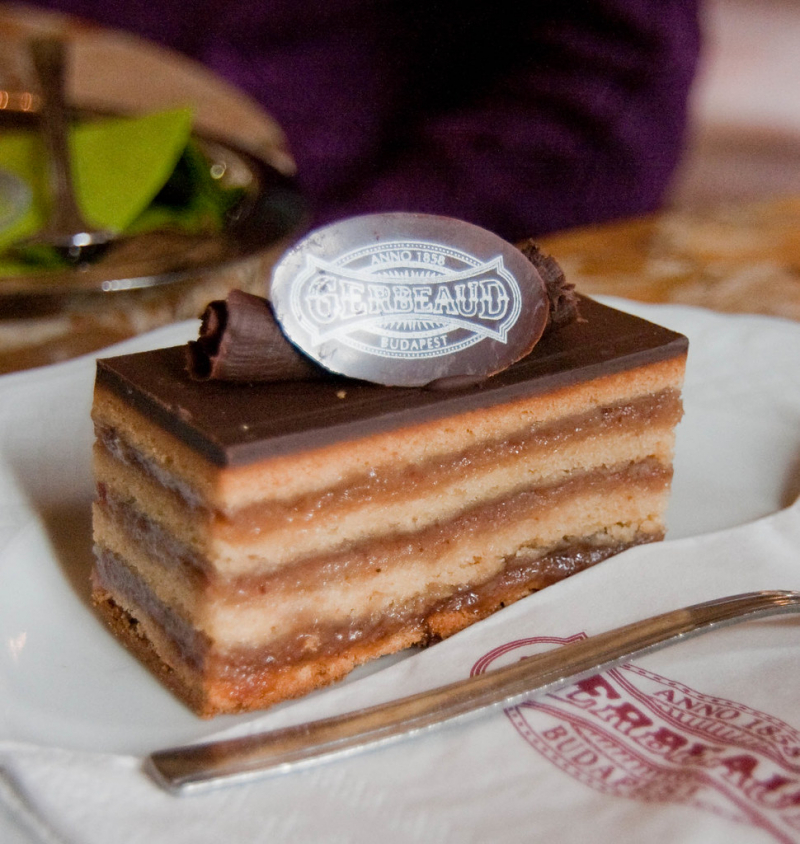
Image by Mérida Hideaway on https://www.flickr.com/photos/meridahideaway/4490975544 Video by Florency Dias -
7th place on the list of the best traditional legal alcoholic drinks made in India, feni, a traditional alcoholic spirit hailing from the coastal state of Goa, is a unique and culturally significant beverage renowned for its distinct production process and flavor. Crafted primarily from the sap of cashew apples, feni showcases the region's rich heritage and craftsmanship.
The production of feni begins with the extraction of juice from cashew apples, resulting in a liquid known as "neero". This juice naturally ferments over several days, allowing the sugars to transform into alcohol. Subsequently, the fermented liquid is distilled using traditional pot stills made from clay or copper, separating the alcohol from impurities and intensifying its potency.
Cashew feni, the more prevalent variety, boasts a fruity, nutty flavor profile with tropical fruit undertones. Its toddy palm counterpart, made from the sap of toddy palm trees, exhibits a milder, earthier character. Both varieties have relatively high alcohol content, typically between 40% and 45% ABV.
Feni is a cultural emblem of Goa, deeply embedded in local traditions and festivals. While enjoyed both by locals and tourists, it should be consumed responsibly due to its potency. Feni exemplifies the unique fusion of natural ingredients and traditional craftsmanship, providing a taste of Goa's rich and vibrant heritage.
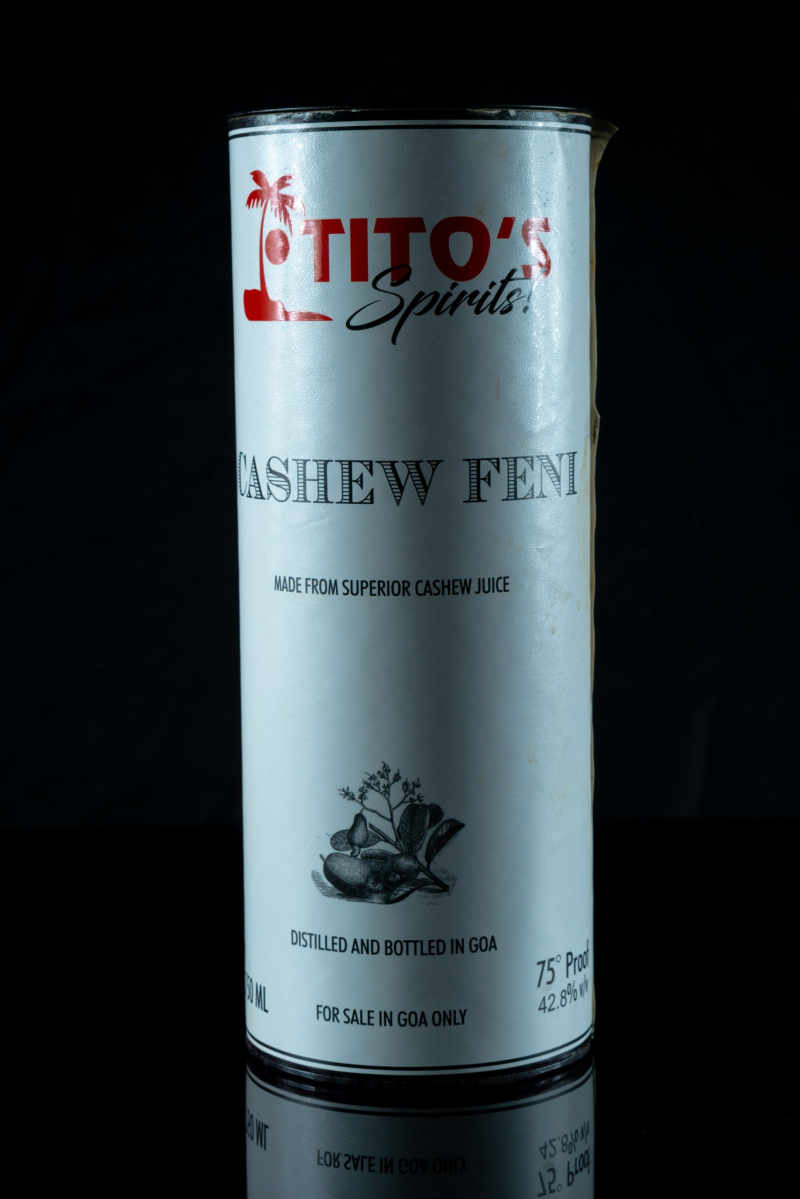
Image from https://pixahive.com/photo/cashew-fenny-on-a-dark-background/ Video by Cocktail Jockey -
Sannas, often referred to as Sanna or Sanna Idli, are a beloved Goan dish that perfectly complements the rich and flavorful curries of the region. These steamed rice cakes, resembling soft, fluffy buns, are a popular side dish rooted in Goa's diverse culinary heritage.
To prepare Sannas, rice is soaked and then ground into a smooth batter. What sets Sannas apart is the use of toddy, or yeast, which helps the batter ferment and rise, giving the cakes their characteristic lightness. In modern recipes, some use baking powder or soda as an alternative to toddy.
After the batter has fermented, it is poured into molds and steamed until the Sannas become soft, airy, and slightly tangy in flavor. They have a subtle sweetness, making them a perfect match for the spicy and savory curries that are a hallmark of Goan cuisine.
Sannas showcase the cultural blend and culinary expertise of Goa, influenced by both Indian and Portuguese traditions. Their soft, fluffy texture makes them an ideal complement to the robust flavors of Goan curries. When in Goa, don't miss the chance to enjoy Sannas with traditional curry to savor the essence of local cuisine.
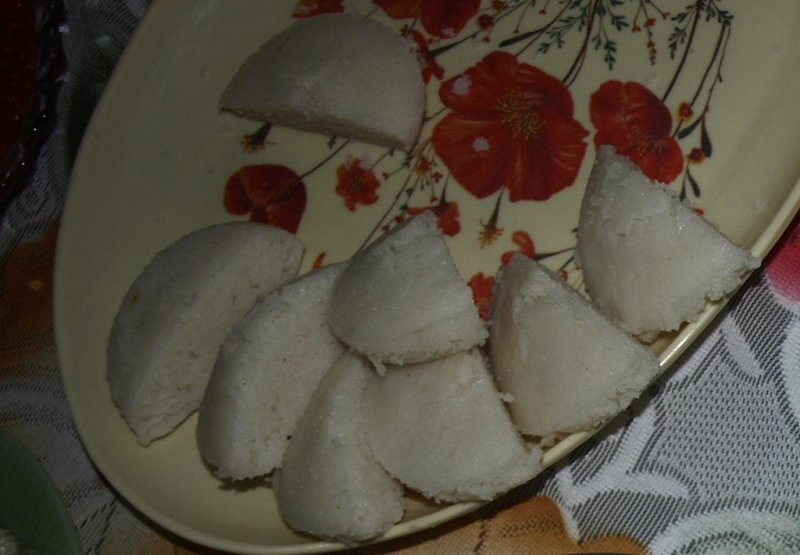
Image by Frederick Noronha on https://www.flickr.com/photos/fn-goa/4599595187 Video by Platin' It With Wendy -
Solkadi is a refreshing and tangy drink originating from the coastal state of Goa, India. It is a traditional beverage that offers a perfect balance of flavors and a respite from spicy foods.
The preparation of Solkadi involves blending coconut milk with kokum, a small fruit native to the region known for its distinct sourness. The mixture is seasoned with spices like green chilies, garlic, and cumin, which gives it a slightly spicy and aromatic kick. The result is a beautiful pink or purplish-colored drink with a unique and delightful taste.
Solkadi is cherished for its ability to cool down the palate, making it an excellent accompaniment to spicy Goan dishes. The tanginess from kokum, combined with the creamy richness of coconut milk, creates a refreshing and harmonious flavor profile. This drink is a testament to Goa's rich culinary heritage and its clever use of locally available ingredients.
Solkadi is typically served in small glasses and can be enjoyed either before or after a meal. It's a fantastic way to cleanse the palate and provides a soothing contrast to the bold and spicy flavors that characterize Goan cuisine.
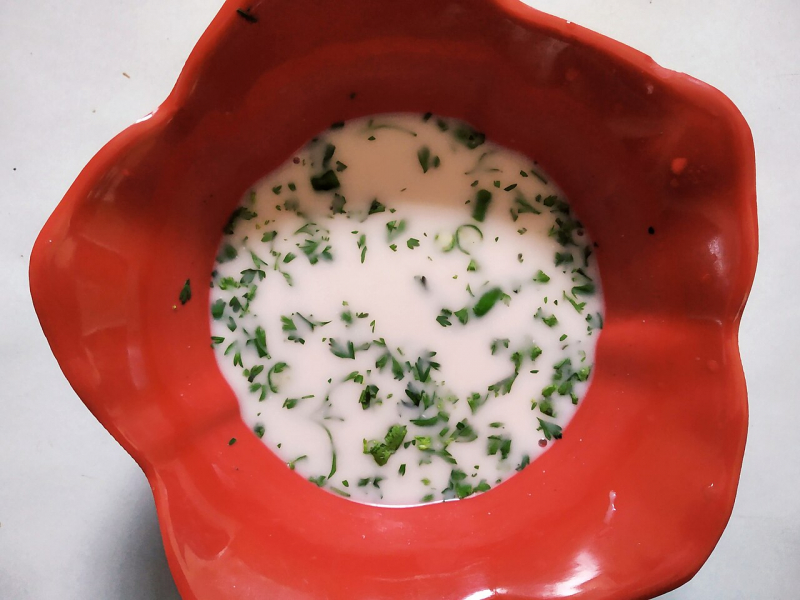
Image on https://commons.wikimedia.org/wiki/File:Solkadi-Konkani-Home.jpg Video by Rajshri Food -
Prawn balchao is a savory and spicy dish hailing from the coastal state of Goa, India. It's a popular preparation featuring prawns pickled in a fiery and tangy sauce, creating a unique and flavorful culinary experience.
The process of making Prawn Balchao begins with marinating the prawns in a mixture of spices like red chili powder, turmeric, and vinegar. This marinade infuses the prawns with a bold and spicy flavor. The sauce, the heart of the dish, is prepared by cooking onions, tomatoes, and a special blend of spices with a touch of tangy tamarind or vinegar. This results in a thick, piquant, and spicy gravy.
The marinated prawns are then cooked in this flavorful sauce, allowing them to absorb the rich, tangy, and spicy character of the dish. Prawn Balchao is a perfect representation of Goa's culinary fusion, drawing influences from both Indian and Portuguese cooking styles.
It is often served with steamed rice or bread, providing a delightful contrast to the bold and spicy flavors of the dish. Prawn balchao is a favorite among seafood enthusiasts who appreciate the fiery and tangy kick that this Goan specialty offers.
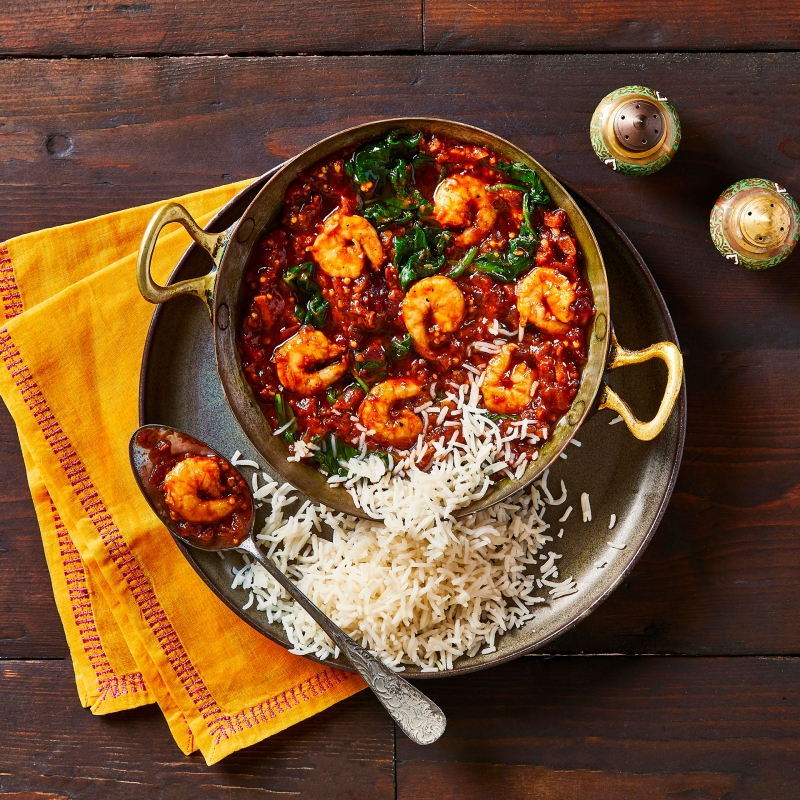
Image on https://www.gousto.co.uk/cookbook/fish-recipes/goan-prawn-balchao-curry-with-basmati-rice Video by Platin' It With Wendy -
Poee, also known as "poi" or "poy," is a traditional Goan bread that holds a special place in the hearts and palates of the people in Goa, India. This soft, spongy, and slightly sweet bread is a staple in Goan cuisine and has a rich history.
The dough for poee is prepared with simple ingredients, including all-purpose flour, yeast, a pinch of salt, and a bit of sugar. What makes poee distinctive is the use of toddy (palm sap) or vinegar as the leavening agent, which imparts a mild sweetness and a unique flavor to the bread. The dough can ferment for several hours, contributing to its airy texture.
Once the dough has risen, it's divided into small, round portions that are hand-rolled into balls and flattened into thin discs. These discs are baked in a hot, wood-fired clay oven called a "bhatti." The high temperature and direct heat from the oven result in the characteristic blisters and charred spots on the bread's surface.
Poee is typically enjoyed warm and fresh, often accompanied by traditional Goan curries, seafood, or pickles. It's especially popular for scooping up flavorful gravies and sauces due to its soft and pliable texture.
This humble and delicious bread is not only a source of sustenance but also a symbol of Goan culture and culinary heritage. It's a cherished part of Goan cuisine, and the aroma of freshly baked poe wafting from local bakeries is a familiar and comforting presence in Goan communities.
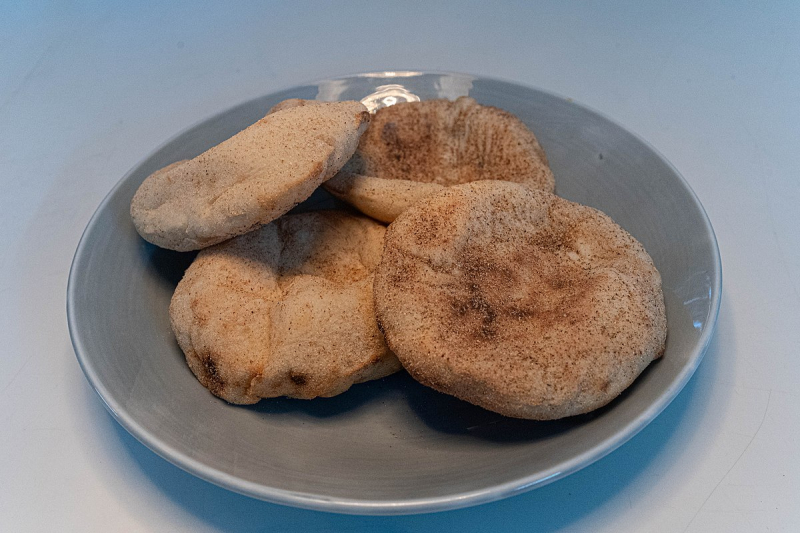
Screenshot of https://en.wikipedia.org/wiki/Poee Video by Sanjeev Kapoor Khazana -
Samarachi Kodi is a spicy and flavorful Goan fish curry that showcases the vibrant and diverse flavors of Goan cuisine. This dish is known for its fiery and aromatic qualities and is a beloved specialty in the coastal regions of Goa.
The star ingredient of Samarachi Kodi is fish, typically a local variety such as mackerel or kingfish. The fish is prepared in a rich and tangy coconut-based curry that's heavily spiced with a combination of fiery red chilies, aromatic spices, and fresh ingredients.
To create the curry, grated coconut, dry red chilies, tamarind, garlic, and various spices are ground into a paste. This paste forms the base of the curry and is responsible for its bold flavor. The spiciness can be adjusted according to personal preference, but it's traditionally hot.
The fish is simmered in this flavorful curry, allowing it to soak up the rich and spicy sauce. Sometimes, Samarachi Kodi is also enhanced by adding vegetables, such as ladyfingers or drumsticks, which contribute additional texture and flavor.
Samarachi Kodi is typically served with steamed rice, which helps balance the spiciness of the curry. Combining the fiery, tangy curry with the freshness of the fish and the mild rice creates a harmonious and satisfying meal.
This dish is a testament to the adventurous and bold spirit of Goan cuisine, where the use of spices, particularly chilies, is celebrated. Samarachi Kodi offers a culinary adventure that showcases the intense and aromatic flavors of the region, making it a must-try for those seeking an authentic taste of Goa.
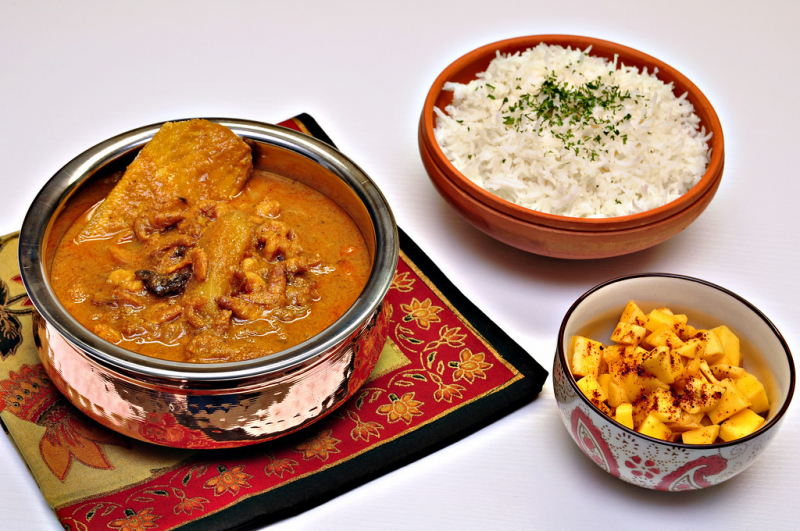
Screenshot of https://www.dustysfoodieadventures.com/2015/08/samarachi-koddi.html Video by Lidds Cozinha -
Chicken Cafreal is a flavorful and aromatic Goan chicken dish that's renowned for its rich green marinade and vibrant flavors. This dish is a testament to the influence of Portuguese and Konkani culinary traditions on Goan cuisine.
The key to Chicken Café is the marinade. Fresh coriander leaves (cilantro), green chilies, garlic, ginger, and a mix of cumin, peppercorns, and cloves are blended into a paste. This green marinade is what gives the dish its distinct color and flavor.
Chicken pieces are coated generously with this marinade, allowing the flavors to infuse into the meat. The marinated chicken is left to sit for a few hours, or even overnight, to develop its rich, complex taste. When it's time to cook, the chicken is typically shallow-fried until it's golden and succulent. The result is tender, spicy, and packed with the fragrant essence of the spices and herbs used in the marinade.
Chicken café is often served with a side of fresh salad or a cooling mint-based sauce to balance the heat and intensity of the dish. It's a beloved Goan specialty found in local Goan restaurants and households. Its aromatic and spicy flavors make it a must-try for those seeking a taste of Goan cuisine.
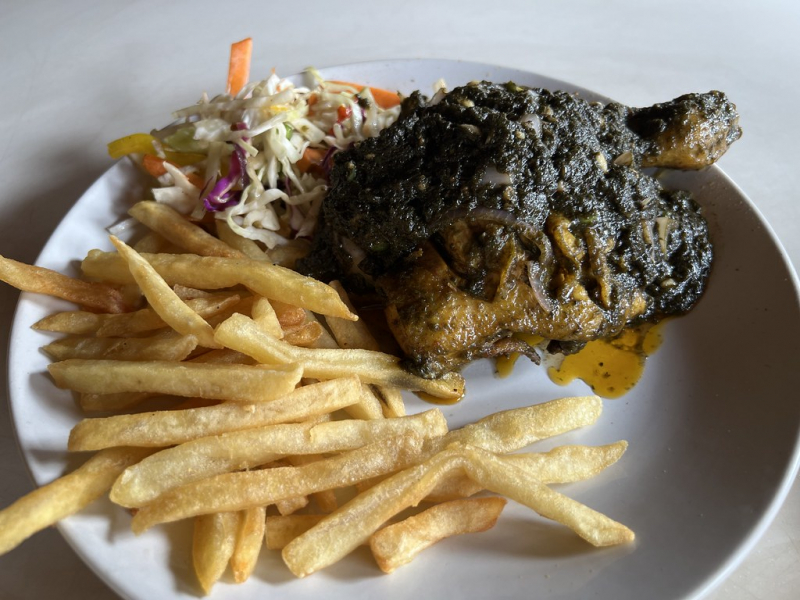
Screenshot of https://www.flickr.com/photos/shankaronline/52575006640 Video by Lidds Cozinha -
Patolea, also known as Patoli, is a traditional and flavorful sweet dish from the Indian state of Goa. This delectable dessert is often associated with special occasions and festivals, particularly Ganesh Chaturthi and Diwali.
Patolea features a unique preparation method. The main ingredient is rice, typically in the form of rice flour or rice paste. This rice base combines freshly grated coconut and jaggery (unrefined cane sugar). The mixture is seasoned with fragrant cardamom and sometimes enriched with a pinch of nutmeg or a dash of ghee (clarified butter).
The mixture is then artfully spread onto fresh turmeric leaves, selected for their natural yellow color and unique aroma. The filling is wrapped in the leaves, forming a distinctive cylindrical shape, and secured with twine or threads. The wrapped parcels are traditionally steamed to perfection, infusing the contents with the delicate aroma of turmeric leaves and melding the flavors of coconut, jaggery, and rice.
Patolea's distinctive shape, vibrant yellow hue, and complex blend of sweet and aromatic flavors make it a sought-after treat during festive seasons in Goa. It's a testament to the rich and diverse tapestry of Goan cuisine, showcasing the state's unique blend of Indian and Portuguese culinary influences.
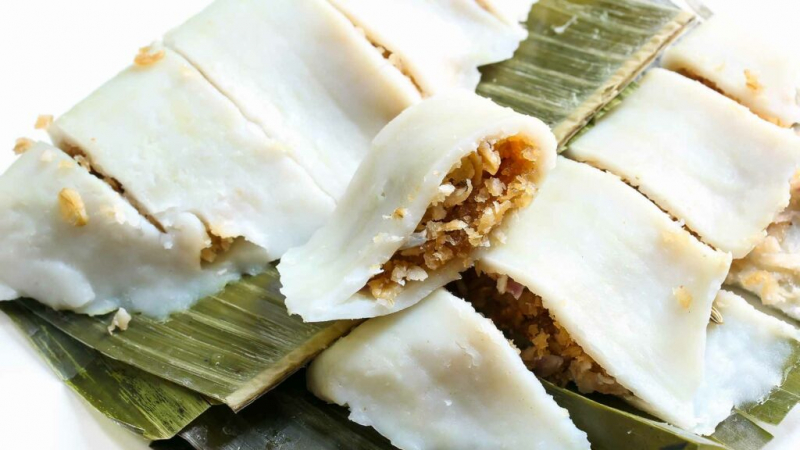
Screenshot of https://geekrobocook.com/recipe/page/59/ Video by Cooking Addiction -
Prawns Xeque Xeque, also known as Camarão Xeque Xeque, is a delightful and flavorful Goan seafood dish that showcases the region's unique blend of spices and flavors. It's often considered a Goan specialty, and "Xeque Xeque" is derived from the Konkani word for "spicy."
This dish features prawns as the main ingredient, and they are cooked in a fragrant and spicy masala, creating a mouthwatering and aromatic curry. The key to Prawns Xeque Xeque is roasted and ground spices, which lend it a distinct flavor profile.
The masala for Prawns Xeque Xeque typically includes roasted red chilies, coriander seeds, cumin, peppercorns, and other aromatic spices. These spices are ground into a paste and combined with garlic, ginger, and grated coconut. The resulting masala is rich and flavorful, balancing heat and aromatic depth.
Prawns are then cooked in this masala, absorbing the intense and spicy flavors. The dish is known for its fiery nature, but the level of spiciness can be adjusted according to personal preference.
Prawns Xeque Xeque is typically served with steamed rice or Goan bread (poee) to help balance the heat and intensity of the curry. Combining succulent prawns and the robust, spicy masala creates a memorable and satisfying meal. This dish is a shining example of Goan cuisine, known for its bold and complex flavors that blend Indian influences into a delicious and unforgettable culinary experience.
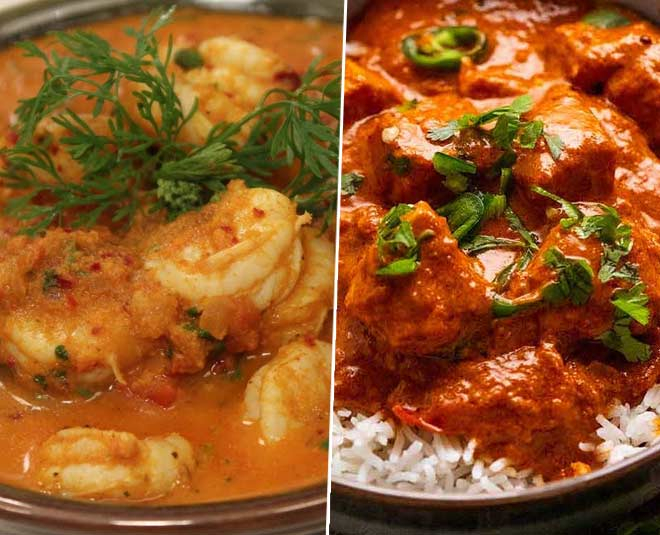
Screenshot of https://www.herzindagi.com/diary/delicious-dishes-of-goa-article-185740 Video by Cook Book


















